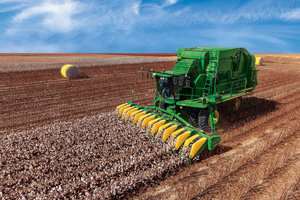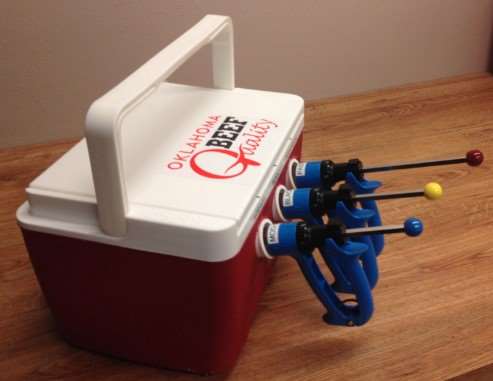By Gant Mourer
Beef Value Enhancement Specialist
Respiratory disease in cattle, also known as BRD, shipping fever or pneumonia may cost the U.S. cattle industry over $2 billion annually (Powell 2013). Management techniques can offset much of this cost, and having a good vaccination program can maintain the health of a calf all the way through the production system. A vaccine can cost over $3.00 a head, and if not stored properly that vaccine can be rendered ineffective. Producers cannot afford to overlook the importance of how they store vaccine and handle it prior to injection.
Biological products should be stored under refrigeration at 35 to 45⁰F, unless the nature of the product makes storing at a different temperature advisable (APHIS 2007). If vaccines are not stored within this temperature range, efficacy to the calf can and will be reduced. Killed vaccines are especially susceptible to freezing temperatures. Freezing a killed vaccine will alter the adjuvant or delivery system of a killed vaccine. This, in turn, negatively affects the immune response to the antigen in the vaccine. Modified live virus (MLV) vaccines are more stable, but can be in-activated if they are repeatedly cycled above or below the required temperature range (Gunn et al, 2013). Also, once activated by mixing, MLV’s effective life is reduced to 1-2 hours, and need to be maintained at the 35⁰ to 45⁰ F. This can be accomplished by only mixing the doses that you will use at that time, and the use of a cooler to maintain temperature while working cattle.

Researchers from the University of Arkansas and Idaho analyzed the consistency of temperatures for different types, ages and locations of refrigerators over a 48 hour period. They found that only 26.7% and 34.0% of refrigerators were within the acceptable temperature limit 95% of the time, respectfully. Refrigerator location can also effect temperature. Refrigerators located in barns (35.6 ⁰F) were colder than in mud rooms (41.72 ⁰F) and kitchens (40.82 ⁰F). (Troxel and Barham 2009). Temperature within a 24 hour period can also be highly variable for individual refrigerators. Troxel and Barham (2009) demonstrated some refrigerators may take up to 8 hours to cool down to the 45⁰F required, or temperature can drop below freezing and range from 28.4⁰F to 44.6⁰F, while others will remain too cold varying from 24.8⁰F to 35.6⁰F over that period of time.
